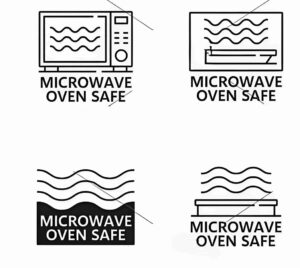Contact us now, we are always here for service
Ameri glass bottles, Since 1968. Your custom glass containers & stock glass container items wholesale specialist. Our customer service is always online 24/7/365.
Follow Us:
Are Mason Jars Microwave Safe? Essential Tips!
2024-06-20 16:08:26Table of Contents
Mason jars have become an indispensable kitchen appliance, known for their wide array of uses in food storage, canning and crafting projects. However, one frequent question regarding them involves their usage in microwave ovens: are these popular glass containers safe to put inside it? We explore this subject further to gain more insights and best practices related to microwaving Mason jars.
What Kind of Mason Jar Are Microwave-Safe?
Not all Mason jars can be safely used in the microwave; its safety depends on which kind of glass material makes up its body. Most are usually constructed out of annealed glass which can withstand higher temperatures but cannot withstand sudden temperature shifts rapidly – in other words, it needs to be heated gradually from low temperatures up. Frozen Mason jars must never be microwaved due to thermal shock as this may crack due to shockwave heating processes; instead consider investing in more resilient tempered glass which better handles rapid temperature changes for faster results and overall more efficiency!
Mason jars constructed of annealed glass can be microwaved safely for no more than 5 minutes at any one time, without rapid heating cycles. Tempered glass containers designed specifically to withstand heating and cooling cycles more safely are typically called microwave safe containers; to check whether one contains such glass look for its microwave safe symbol depicted as wavy lines to determine its suitability for microwave use.

Microwaving Mason jars is not only great way to warm the food inside them but can also serve to sterilize canning jars.
Steps for Microwaving a Mason Jar Safely
Before microwaving, always double check whether or not your Mason jar features a microwave-safe symbol on it as this serves as an accurate gauge as to its suitability for microwave heating.
1. Check Your Jar: Check to make sure the glass jar does not feature cracks, chips or any imperfections as these could compromise its structural integrity when heated. Even minor imperfections could compromise its integrity.
2. Remove Metal Components: Any metallic components such as lids or rings from your microwave could potentially create sparks, cause irreparable damage and lead to safety risks for yourself and others.
3. Gradual Heating: When warming Mason jars with unmarked labels or older models that could potentially shatter from sudden temperature changes, gradually heating at 30-second intervals is best to help avoid sudden fluctuations that might result in temperature shifts that cause glass fragmentation.
4. Avoid Thermal Shock: Do not place Mason jars directly from the freezer into your microwave without first allowing them to reach room temperature; doing so could result in thermal shock which could crack or shatter their glass and potentially crack or shatter it permanently.
Precautions When Microwaving Mason Jars

1. Wear Oven Mitts or thick towels: When handling hot jars to protect yourself from burns as the glass can quickly heat up to extreme temperatures.
2. Avoid Filling Jars Beyond 60-70% Capacity: As food expands during heating processes, overfilling may cause leakage of spillage or pressure buildup that leads to spilled food, leading to spills or pressure buildup
3. Stir Contents Occasionally: Stir your contents periodically during heating intervals to ensure an even heat distribution and prevent internal pressure build-up.
4. Antique Jars: Be wary when heating antique jars as these may not have been designed specifically for microwave heating or have not yet been tested at high temperatures.
Alternatives to Microwaving Mason Jars
1. Microwave-Safe Glass Containers: When heating food in a microwave oven, use only microwave safe containers made of glass or ceramic material.
2. Stovetop Heating: For precise temperature control use pots or pans instead.
3. Microwave-Safe Plastic Containers: Microwave-safe containers offer fast heating times with vented lids to avoid messy splattering of food when heating in the microwave.
Conslusion
Mason jars can be safely microwaved if certain precautions are observed. Always inspect for the microwave-safe symbol, ensure the jar is undamaged, remove all metal parts prior to microwaving and use short heating intervals with stirring before placing into your microwave oven. Whenever uncertain, try other microwave safe containers as a safety measure.
By following these guidelines, you can safely microwave Mason jars while protecting both them and your microwave from potential damages.

